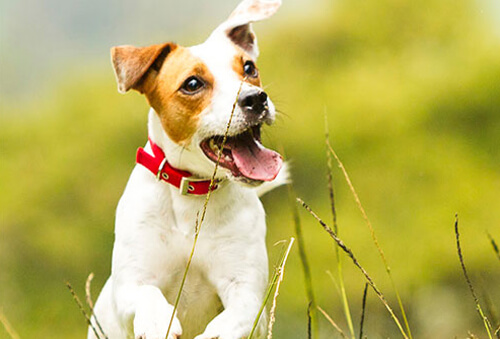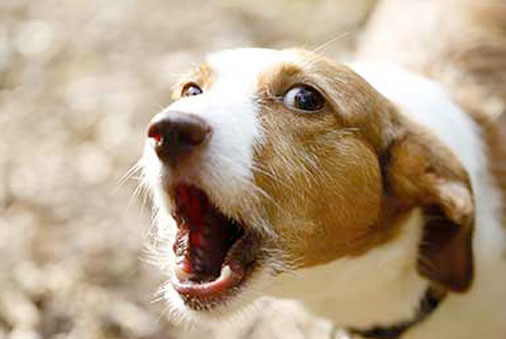Regardless of which theory you believe, all dog breeds from Bull Mastiffs to Toy Poodles, are the same species: Canis lupus familiaris, while their wolf cousins are Canis lupus.
Wild spirit
You don’t have to be an evolutionary biologist to observe your own pooch’s inner wolf. Domestic dogs and wolves share many traits, from marking and defending their territories, to burying prized possessions — whether it’s dinner prey or a favorite bone or toy.
Wolves give birth in dens, which may explain why many canines love curling up in confined places like crates, complete with cozy blankets or beds.
Like dogs, wolves thrive on friends. Both species talk to their pals or pack, though wolves howl more frequently than they bark. Dog breeds like Huskies and Malamutes also communicate by howling.
Wolves and dogs share some of the same body language, as well, whether it’s a down-dog stretch, running around, or tail wag to convey dominance, aggression or submission.
Lost in evolution
Of course, wolves and family dogs have their differences.
Your furry companion’s snout is shorter and though he may wolf down his food, he does it more comfortably in front of you. Wolves don’t usually dine in public, especially with potential predators lurking.
Dogs also don’t live in wolf packs of six to 10, though feral dogs sometimes travel in small posses.
My what big teeth you have
Although dogs and wolves both have 42 teeth, wolves’ teeth are longer, the better to devour prey. Thanks to domestication, dogs have weaker hunting instincts; after all, we feed them.
Therefore, most dog breeds have evolved with teeth too small to hunt wild prey and so they’ve adapted to a different diet. They can still do serious damage to food wrappers and even aluminum cans, as many dog parents know.
Paws for claws
Wolves have larger paws and their legs are longer so they can run much faster than dogs, an asset for animals that need to hunt down their food and/or escape predators.
Although both species are carnivores, dogs have more flexible digestive systems. Wolves are protein hounds who feed off meat and fish. Dogs are omnivores who can digest proteins plus fruits, vegetables and grains if they don’t develop sensitivities to those foods, of course.
Brainier?
Although the wolf brain is physically larger than a canine’s, wolves are usually more difficult to train. Whether that means they’re actually smarter than the average dog, or just more stubborn, is open for debate.
Dogs generally respond better to human vocal commands, whereas wolves do better with hand signals.
Compared to humans, the sense of smell is advanced in both wolves and dogs.
Wolves have a “violet” gland at the base of their tail that releases a pheromone scent hormone onto pack members to brand them as family. Dogs have a vestigial violet gland, which functions only minimally now that they live with humans and, thankfully, don’t need to mark us as pack members.
Give a dog a home
The wolf in dog’s clothing may tempt you to rescue one, but remember, adopting a wild animal is never recommended. They aren’t domesticated and if you take home a dog with immediate wolf ancestry, he’ll have special needs. Hybrid wolf dogs are usually more difficult to train and require a higher protein diet than canines.
Besides, with all the homeless dogs available for adoption at your nearby shelter, there are far too many loving, long-distance wolf cousins who would greatly appreciate being a member of your pack.





